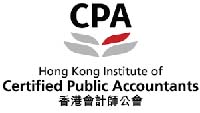Herman Melville may have recognised this white whale, a maritime white elephant if you will, but he would also have noted the lack of any obsession in pursuing it. Yes, this is the HK$8.2 billion cruise terminal which opened in 2013 on the old runway at Kai Tak which is not being used much, is just too remote but about which the Government is doing almost nothing.
Ahead of Carrie Lam Cheng Yuet-ngor taking over as HK’s Chief Executive at the end of next month, this is the fourth in a series of policy proposals focused on HK’s infrastructure and how to finance it.
It comes as last month, the Audit Commission reported that last year 677,000 passengers passed through the terminal. It was full, i.e.both berths occupied simultaneously, for only two weeks and the utilisation rate even during the peak seasons of January to March and October to December was only 38%. Not mentioned by the Commission, though, is that perhaps half of calls scheduled for 2017 are by one ship, the Genting Dream, which has been based jointly here and upriver at Nansha but which will relocate to Singapore in December. This cruise terminal is barely warm and is in need of a serious sweating.
Most of the terminal is managed by Worldwide Cruise Terminals, a consortium led by Worldwide Flight Services under a tenancy agreement which runs until 2023. Why would passengers bother spending any time in a cruise terminal? This is not their last chance to go duty free shopping or to eat decent food as is the case with an airport terminal. There is, therefore, an ancillary commercial area aimed at local, non-cruising demand. The roof garden has spectacular views (at the golf driving range which preceded it, there was a 270 degrees water hazard); it has hosted weddings, commercial promotions and even a tattoo convention; and the long established Ocean Terminal in Tsim Sha Tsui makes far more money as a shopping mall than it ever does as a cruise terminal. But as of March, the ancillary area at the Kai Tak Cruise Terminal was also severely underutilised in that only 48% was let and open for business.
Under the tenancy agreement, the Government shares up to 34% of receipts but the terminal’s greater purpose is to bring high spending tourists, big on glamour and convenience, to town. Of course, HK has one of the most spectacular harbours on Earth so it simply has to be a destination for cruise ships. But cruise ship passengers spend nothing on accommodation and little on food and beverage. They also visit for only a few hours, hours which they want to spend, glamourously and conveniently, most probably visiting the obvious sights as quickly as possible. The best port visits therefore come from stepping off the ship straight into the centre of town as Ocean Terminal, which remains a competitor to the KTCT, offers. Not so much fun is queuing to get a shuttle bus or taxi into town and worrying about missing the last one back to the ship. But the Kai Tak experience is even worse: queue to get a shuttle bus or taxi to Kwun Tong or Diamond Hill (where? many will be thinking) then, if you are aiming for, say, the Peak Tram, take the MTR to Mongkok, change onto the Tsuen Wan line, exit at Admiralty, walk uphill to the Peak Tram and then start to queue there too. Oh dear.
Most passengers would therefore want to just spend on a cab but expecting cabs to deal with 3,000 passengers all arriving at once on dry land which is in the middle of nowhere is just silly.
Thus we manage to ruin both the glamour and the convenience.
The Government has plans to develop a sports park featuring a 50,000 seat stadium further along the Kai Tak runway (more on which in a later piece). Occasionally a cruise ship visit will coincide with an event there but most other times cruise passengers will not be interested in this or the routine commercial and residential developments, still being planned despite the old airport closing twenty years ago, because they want to see the sights.
Why did the Government ever decide to move much of the cruise business away from bang in the middle of town at Ocean Terminal? Could OT have been extended to accommodate larger ships? Was extending it even necessary? I don’t know the answers to these questions but they are, of course, just more spilled milk now. The real question is: what to do about KTCT going forwards?
I suggest that the Government double down and invest in a fleet of tenders – effectively very large water – borne mini buses – which can ferry passengers en masse directly to the ferry piers in Central and Tsim Sha Tsui. This would extend the magical water – borne arrival into HK and double as a mini harbour cruise (so there would be vested interests against that). I have long advocated to the Government that it should extend its ferry network to include routes not just across the harbour but along the shoreline too. (There is already a weekend service to the cruise terminal from North Point and Kwun Tong but this could not remotely cope with a cruise ship). Taken together with the work of the Harbourfront Commission and others, this would draw focus back to the jewel in our midst. And, just as all the Star Ferries are named a variation of Star, so too could these tenders be named a variation of Pequod …







